#Chi-O Photography
Text
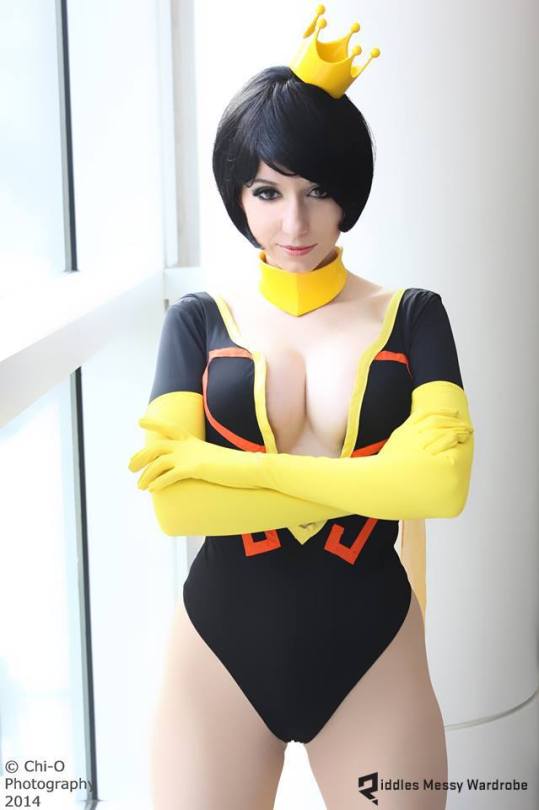

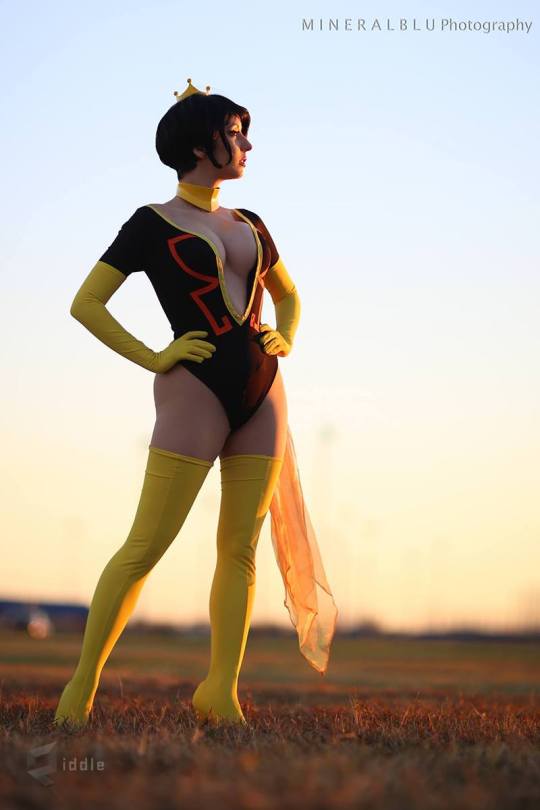
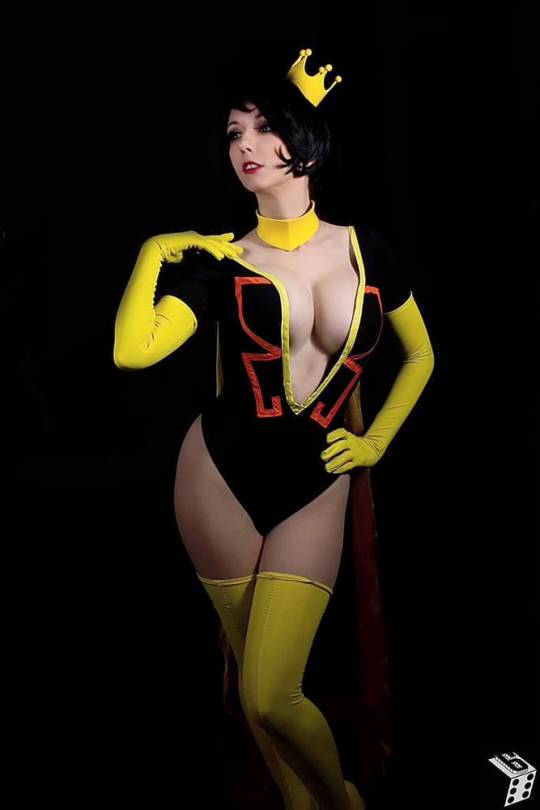
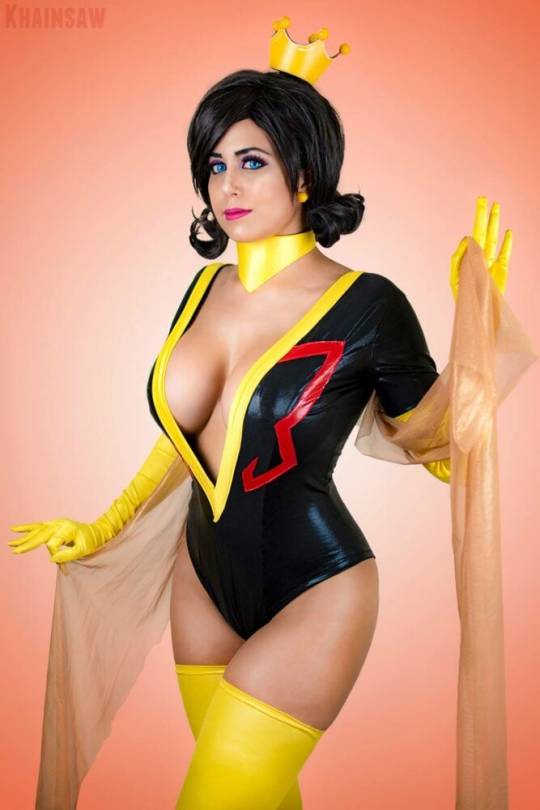
Dr. Mrs. The Monarch
Cosplay by Riki ‘Riddle’ Lecotey
#Cosplay#Dr Mrs The Monarch#Dr Girlfriend#Riki Lecotey#Riki Riddle Lecotey#Animation#Cartoons#Cartoon Network#Venture Brothers#Photography#Chi-O Photography
77 notes
·
View notes
Text
The Music Goes On and On

Rating: K/General
Setting: in the decade before the main story.
Synopsis: Shinji is going about his daily life at his job in a music store, until he sees an old face from the past.
AN: the winner of my first poll! This was fun to write, so thank you to everyone who voted for it!
I hope I did Shinji justice here. He's a character I love, and I've always wanted to know what he and Visoreds did after escaping the the Living world and before they introduced themselves to Ichigo. I've broached the topic before in As Months Go By, As Season Change part II, but I wanted to write a specific instance of his life in the World of the Living. I had intended this to be more comedic, but well...it's me, and it ended up more angsty with one sappy moment.
In terms of research, I looked into Japanese 1990’s music and the workforce during the 1970’s. I'll briefly go over it here, but if you want to skip it and get to the fic, continue to the line break before the story begins.
For music, I mainly used information from this article about Japanese jazz bands, doing Youtube searches for 1990s Japanese music, and searching for what records stores in Japan typically look like.
The songs, albums, and bands mentioned in this fic are:
B'z: a Japanese rock duo who sold millions of albums during the 1990's. They're one of Japan's best-selling artists even to this day, having sold over 80 million albums.
Sasori ni sasa reta by Kimidori
Review by Glay: this was one of the best-selling albums in Japan for 1997, and sold over 2 million copies in it's first week.
Casiopea: a Japanese jazz fusion band who have created over 40 albums as of the time of writing this fic. They've been active since the 1970's, and have gone through four phases with different band members; in this story, they're in their second phase.
Light and Shadow by Casiopea
Casiopea by Casiopea
Yasuko Agawa: a Japanese jazz and blues singer. Before releasing her debut album, Love-Bird, in 1978, she starred in movies in the early 1970’s. This included the Bloodthirst Trilogy, a Japanese horror film trilogy that involves unconnected stories about vampires. Agawa starred in Chi o suu bara, which is the final film in the trilogy and it's title has been translated to Evil of Dracula in English.
Love-Bird by Yasuko Agawa
All Right by Me by Yasuko Agawa
Scenery by Ryo Fuuki (also mentioned in As Months Go By, As Season Change part II)
In terms of the workforce research, I had to change the timeline in light of what I found. Rather than seeing a coworker Shinji knew from 30 years ago, it's now 21 years. This is because the store they worked at together, Yodobashi Camera, opened it's first store in 1975, and in this fic Shinji got a job with the company a year later. In it's early years, the stores primarily sold cameras and photography equipment, but eventually branched off into other technology and home electronics such as TVs and PCs. Nowadays it's online version is incredibly popular and one of Japan's most visited online shopping platforms. Why a camera store? I can't explain why, but I have this weird feeling that Shinji might've worked in a camera store at some point. Maybe because old camera's used to have inverted lenses, meaning they could be upside down (and we all know how Shinji feels about things that are inverted).
Finally, there's a slight joke with the name Shinji chooses to use here. From what I saw in my research, ‘Mako’ can use the same Kanji characters as ‘Shinji’, (which are ‘真子‘ and if I’m not mistaken have the same meanings of ‘truth’/’sincerity’ and ‘children’) but both names can also be spelled using other Kanji characters too (but it changes the meaning of the name). While ‘Mako’ tends to be primarily a girl's name, it seems it can also be a boy’s name too, and from what I can see, the spelling of it can be same for both boys and girls when using the same characters as ‘Shinji’. If I got any of this wrong, please let me know so I can change it. My sources for all of this were here and here.
Anyway, I hope you all enjoy this!
______________________________________
The bell above the music store’s entrance rings as the latest customer leaves. Shinji doesn’t glance their way, taking and unfurling a poster of B’z from his cart. After pinning it to the wall, he lifts out a box of CDs to restock the ‘New Releases’ display rack at the front.
Karakura Beats Records Store is empty save for him and Kana, who resumes pricing the latest shipment of vinyls behind the cash register. The morning sunlight pours in through the many posters and notices stuck to the windows facing out on to the quiet street, casting blocks of shadow over the many vinyls and CDs.
From the speakers high up on the walls, a tune he’s never heard before begins to play quietly through the air. Shinji drums his fingers on the CD rack to the tune in between stacking in copies of ‘Review’ – which will no doubt be gone by the end of the week if the hype around the album and the sales figures from other music stores are to be believed.
Eventually, he’s swaying his body to the beat too. “Yo, Kana-san!”
She looks up, her bright, dyed hair falling over one shoulder. “Yeah?”
“Which track is this?” he asks, still swaying as he tops up the rack the. “It’s a good one, I might buy the album if the rest is any good.”
“ ‘Sasori ni sasa reta’ by Kimidori.” She grins. “I knew I could get you to like something I like.”
“Didn’t think you’d like hip hop.”
“Not much of it, but I heard this one when I was in my last year of high school.”
Done with the CDs, Shinji returns to his cart and rolls it behind the cash register. “Ya done with those?” he says, pointing at the vinyls.
Sticking a price on the top one, Kana picks up the pile and drops them into the cardboard box that just had 'Review' in it. “Done now.”
He goes to pick it up, but blinks down at the cover. There’s three shadows on a white surface, and above them with is a de-saturated sky, and running along the middle is a dark lake and the silhouettes of hills and houses. The album’s title is in English, as is the band name. Even so, he recognises the name without having to read the blue slip on the vinyl’s side with a translation. “Huh, when did this come out?”
“In September. The old drummer came back, apparently.”
“Ya mean Jimbo Akira?”
“Yeah, but it’s got a guest drummer too.” Kana cocks an eyebrow at him. “I’m surprised you don’t know. You like Casiopea, right?”
Shinji shrugs. “Some of their stuff, sure. I can take ‘em or leave them, just surprised I didn’t know about this one.”
“They release something every year, right?” Kana says, moving on to the next stacks of vinyls and CDs to price. “Shouldn’t be too surprising.”
No, it shouldn’t. He’d been listening to their music since their self-titled debut album in 1979, and even though he’d lost some interest in their music by the late 1980’s, he still kept tabs on them. But then, even after being in the world for as long as he has, the passage of time is so different it sometimes escapes him.
Resisting the urge to shake his head, Shinji puts two other boxes of CDs and vinyls Kana had prepared into his cart, and rolls it down the right-side aisle.
Hecomes to a stop at his favorite section. Written above the display racks and cupboards is ‘Jazz’. When he’d started here three months ago, while he'd been impressed the store's collection was better than others he'd come across, the section had been smaller and in desperate need to of a wider range of artists. After showing his extensive knowledge about jazz and blues music had been one of the reason’s he’d been hired by he and Kana’s manager.
Aside from the usual roles in customer services, he’d been tasked with refurbished the store a little, putting up posters for bands and music artists on the walls and redoing the titles over each genre section. While doing the latter task, he had to withhold the temptation to write every genre name upside down – he’d tried to argue it would make them stand out from other stores, but backed down when Kana protested against the idea, saying ti would confuse customers.
The jazz section was his unofficial space in the whole store, the one where he got to arrange it as he wanted. The entire row against the wall has a wide variety of artists, from the famous to the up and coming to local talent. He goes to the where the rest of Casiopea’s discography is and clears a space for the vinyls.
The bell rings again. Kana greets their new customer from the counter and offers assistance. Judging from the voice that thanks her, the person is elderly.
Shinji doesn’t listen to the rest, but as he makes his way down the middle aisle to stack some vinyls and CDs in the ‘Rock’ section, the older man remains in his peripheral. He takes out the box, balancing it on the rack with his arm over the top, and unloads the vinyls two at a time into an empty space with the others. He frowns at the sensation in the back of his mind; something nags in the back of his mind, begging him to look at the man.
The bell rings again. This time by the sounds of it, it’s one of their regulars, a young woman who’s name doesn’t remember. She and Kana chatter away, discussing the weather and family. It’s so ordinary, so far away from all of the worlds he’s ever known. He hasn’t been in the Soul Society for decades, and yet there are times like now when it feels like only yesterday he was a captain.
With all the vinyls stacked in, he begins to lift the almost empty box back into the cart. However, his arm bumps into someone, clattering the records inside. Shinji turns to apologize, but his throat closes up involuntarily when he sees it’s the older man from before.
“Oh, sorry, please excuse…” The old man trails off.
Shinji frowns, that nagging sensation getting stronger now that he has a closer look at the man. He’s not as old as he thought. His hair is greying, but there’s still some dark hair on the top of his head and in his thick eyebrows. Wrinkles ring around his eyes and the ends of his mouth, but they aren’t deep, only just beginning to show more prominently. Behind his glasses, the man’s eyes are dark brown, and widened with probably the same strange feeling of familiarity as Shinji is experiencing.
Then, when the man tries to speak again, and his brows furrow into a frown, it hits Shinji.
He nearly has to bite his tongue from saying the man’s name aloud. “No harm done,” he somehow manages to say without any of the spiking nerves thrumming through him.
He tries to remain calm as he continues stacking the vinyls in, but he can feel the man’s – Keiji Mimura’s -- lingering gaze on him, even as he turns and pretends to browse the albums in front of him.
He has to get out of this fast. He can hear the cash register going; Kana must be ringing up the regular, which means she’ll be free any second now. He hoists the box back into the cart, planning to head back to the counter, then offer to take over the register for Kana. She’d go out on to floor, probably keep Keiji distracted and try to sell him some obscure rock album she likes. If he ends up buying the album, Kana will likely keep the conversation going all the way to register, get Shinji to move aside so she can ring Keiji up, and then he’ll be gone from the store, and Shinji’s life again.
Shinji doesn’t even make it three steps when Keiji speaks up behind him. “…Hirako-san?”
Shinji has no choice but to stop and turn around. In the face of the man’s shocked expression, Shinji somehow manages a smile. “Excuse me? Did you say something.” It sounds lame even to his own ears.
The man shakes his head. “Forgive me, it’s just…you look and sound like someone I used to know.”
It takes everything in Shinji to not drop the smile, but even then, the corners of his mouth twitch. How to get out of this?
He and the other Visoreds had managed to keeps their identities a secret up until now, switching jobs every few years, never getting close to any coworkers and never revealing anything about their personal lives. They mostly find work outside of Karakura Town in the major cities, countryside towns, and to a smaller extent the towns that surrounded Karakura. The commutes were a pain, but they needed to make a living and not expose themselves as being ‘ageless’ to local residents. This was his first job in Karakura Town, and it had partly been out of desperation when he couldn’t get another anywhere else.
He can dismiss Keiji, just treat this as an awkward encounter with an elderly man who had a case of mistaken identity. It happens, more often than he realized before being forced into the World of the Living.
It’s what he should do.
Later, as he's walking back to the warehouse and then while being lectured by the other Visoreds after telling them about his day, he will reflect on this moment where he chose to do something far more troublesome for himself.
Shinji’s widens his eyes, pretending to come to a realisation. “Ah! Wait. I think I understand your confusion.” He chuckles and shakes his head to himself for effect, leaving the older man bewildered. “I’m terribly sorry, sir,” Shinji continues. “Did you used to work with Hirako Shinji?”
“Y-Yes!” Keiji stammers out.
“Ah, ya see, he’s my father. I’m his son.”
The older man blinks, briefly scanning Shinji from head to toe. “He never said anything about children,” he murmurs under his breath.
Shinji pretends he didn’t hear it, remaining rooted in place, grin plastered wide over his face and a fisted hand on his hip. Seeing the man’s unfaltering skepticism, he bows slightly and holds his hand out to him. “I’m Hirako…Mako.”
Of all the names! He purses his lips and continues to stare at the ground, hard, as he inwardly begs, Please don’t think too much on it, please don’t think to much on it, Keiji-san, don’t think --
After a beat, the older man bows and shakes Shinji’s hand. “I’m Mimura Keiji. Forgive me for before, it’s just that you look so much like Hirako Shinji – your father, I meant.”
“That’s fine. I’ve gotten that quite a bit, actually. Everyone’s always saying I look like my old man.”
That gets a huff of a chuckle out Keiji; Shinji can’t tell whether it’s due to the comment, how informally he’d spoken, or how the way he spoke was identical to his 'father'. It's probably the latter.
Keiji lets go of Shinji’s hand and they both straighten back up. The store bell rings, briefly drawing Shinji’s attention to Kana. To his chagrin she doesn’t look his way, instead continuing her chat with their regular as she makes her purchases.
“I worked with your father a long time ago.” Keiji explains. “We were coworkers”
Shinji keeps his grin small as he returns his focus back to his old coworker. “Where did you work with him? The old man’s had a lot of jobs across his life.”
Keiji smiles. “So he said. We used to work at Yodobashi Camera together.”
“Ah yeah! He was a sales clerk there. He barely knew a thing about camera’s when he started, huh?”
Another huff of a chuckle broadens the old man's smile. “He learned on the job. I was no expert at the time by any means, but he even had to learn which button to press to take a picture.”
Shinji chortles, both from the memory and the embarrassment of those years. He’d been the World of the Living for several decades by that point. He’d known about cameras but was so concerned with training to control his Visored abilities and stay afloat money-wise he hadn’t ever learned about some of the most basic things for humans.
“He was all right with the other technology of course,” Keiji continues. “We often had shifts together. Every now and then we went for drinks at ‘The Golden Cup’ with everyone else.”
Despite himself, Shinji can’t help but grin wider as nostalgia flutters in his chest. He and the other Visoreds tried to maintain a certain distance between themselves and the cowrokers in whatever job they worked in. Regardless, on rare occasions, he’d indulge himself and go drinking with his coworkers. He did it more often with the employees of Yodobashi Camera than in any other job, and he’d never had a bad night out with them. They were a good bunch of hard workers who knew how to party even harder afterwards -- or at least as much as they could given that they all needed to wake up and go to work the next day.
“I -- He mentioned that too,” Shinji eventually says. “He always came home in a good mood after those nights, tripping over his feet."
Keiji gives a nervous snort. "I must admit, I did worry about how much he drank sometimes."
Shinji did too. He recalls the concerned pinch of Keiji's brows when he was about to leave, wobbling on his feet. He rarely got drunk, and he didn't always understand why he chose to get drunk with those guys.
"Nah, he was always sharp," Shinji says, "even when drunk. Heck, he could even play mahjong while drunk and still win." He let's Keiji's chuckle fill in the air for a pause. "He used to play that game with his coworkers too, right?”
“Ah, yes! I used to enjoy our games.” Keiji sighs. “It’s been a long time since then, and Yodobashi Camera has certainly grown bigger and bigger over the years.”
“Ya can’t escape them these days, huh? Feels like they’re at every railway station in the major cities.” Shinji leans back against the vinyls racks, trying to appear casual. “So, do you live in Karakura Town now?”
“Oh, no. My wife and I are visiting our daughter. I assume you live here?”
“Yeah, I moved here about a year ago.” A lie, so natural sounding from years of saying many more like it before.
He can sense the next question coming – something to effect of ‘Do your parents live here as well?’ – so he quickly continues, “It’s a small town, but there’s a few places I can recommend for visitors if your daughter hasn’t taken you to them already.”
“We only arrived two days ago. We visited one of the shrines with her yesterday. My wife and daughter are having breakfast at a cafe nearby. We’re planning to walk around the shopping district this afternoon.”
“All good ideas. There’s also Tsubakidai Park, it’s always nice to walk around there. There’s also a music performance happening there two days from now, local bands mostly.”
“Is there now?”
Shinji points to the most recent poster taped up next to the store’s entrance. He briefly glances at Kana, who had gone back to pricing the vinyls, but she’d stopped at some point, staring at their exchange. She eyes him with a raised brow. Her expression is asking him ‘Is everything okay?’
“See that there?” Shinji says, keeping Keiji distracted long enough to wink at Kana in reassurance. “It’s got the details for it if you’re interested.”
With a shrug and a good-natured roll of her eyes, she returns to her task.
Keiji nods. “I’ll be sure to look at it on my way out.” Turning back, he looks over Shinji shoulder. “Speaking of, I came here to get an album I was told would be here. I believe it will be under jazz.”
“Yeah? Which one?” Shinji asks as he leads Keiji to the ‘Jazz’ section.
“It’s often hard to find, but Umei -- oh, she's my daughter -- thought I should try my luck here. She said this store often sells music from older artists. ‘Retro’, she calls it.”
“She ain’t wrong.”
Keiji frowns thoughtfully when they stop in front of the rows of CDs and vinyls. He let’s out a sudden, ironic laugh. “Actually, now that I think about it, it’s from a singer your father introduced me to.”
Shinji already knew, and his heart squeezed for a moment. “Oh, yeah? Which one?”
“Agawa Yasuko.”
The memory comes to him. He’d gone drinking with Keiji and his coworkers, and they ended up discussing films they love. When the topic of The Bloodthirsty Trilogy came up, Shinji brought up how Yasuko Agawa had gone on to make music since then. Only Keiji was interested, and took up Shinji’s suggestion to go buy her debut album. He hadn’t seen someone as smitten with a jazz album as Keiji (and apparently his wife) was. They discussed her singing the next day during lulls at work, and for the first time in a while, Shinji felt relaxed, briefly forgetting the troubles that always weigh on his mind.
“Well, her albums are just here,” Shinji says, gesturing to the left-side display racks. “Were you after CD or vinyl?”
“CD,” Keiji says while steps around him. He bends over the CDs and thumbs through them. “You have most of her albums here.”
“It’s like your daughter said, we’re retro here.”
He takes out a copy of ‘All Right With Me’ with a grin. “This is the one! I listened to it last year, but haven’t been able to find a copy of it until today.”
“It’s a good one, she’s always had a great voice. I can recommend any of her albums, they're all good.”
“Ah, are you a fan of jazz music too? Just like your father?”
“Yeah, like my old man, jazz is one of my favourite genres. It never gets old.”
“He said the same thing.”
Then, because one of half of him is now stuck in the past, Shinji says, “My father mentioned you had a wife, a daughter, and a son. They doing okay?”
Keiji hums in ascent. “Yes, very well. I’m not sure if your father told you, but my wife, Kyoko, works in a bakery. She has worked in the same place for over twenty years now, and got promoted to manager five years in.”
“That’s incredible!”
Keiji nods firmly and returns to flicking through the albums. “She’s always been determined. Umei is a newspaper reporter for the local news here, and my son, Naoya, is an accountant in Tokyo.” He grins. “He’ll be having our first grandchild soon. My wife is eager to be there in the weeks before the baby is born, she already has gifts planned for him. He’s a lot like his mother, determined and hard-working. I have no doubt he’ll be a good father.”
Shinji has the sudden urge to reminisce with this man. To talk about their days in the store, where Shinji learned how to use a camera, and about their regular customers. To show he remembered the little details Keiji had told him about his life outside of work – how Kyoko would come to visit them with baked goods when she knew her husband hadn’t packed a lunch, or how happy he was about Umei’s first day of school, or when he was pleasantly surprised by Naoya’s sudden obsession with the new ‘Astro Boy’ anime. To talk about the music from that time, and see if he’d taken on other jazz and blues recommendations he’d made.
At Shinji’s silence, Keiji’s grin transforms into a bashful smile. “You’ll have to forgive me. I must seem like an old man rambling about my family and reminiscing about the past.”
“Nah, it’s fine. I get it. My old man worked at Yodobashi Camera over twenty years ago, and if I saw an old coworker, even if it was their kid, I’d want to talk about it.”
"Well, thank you then," Keiji says, “How is your father these days? I probably should've asked that first.”
Shinji knew it was coming, hovering over them from the moment Keiji recognised him without realising. Even so, the pit of his stomach plummets along with his grin. He’s at another crossroads.
He takes in the man’s features again. How the wrinkles gather deeper around his eyes and around his mouth as he speaks. The fact he wears glasses now, resting over the faint scar on his nose he got when he broke it during a high school baseball game – he’d tumbled after getting homebase and cracked it on the ground, Shinji recalls; it'd been a drunken confession made on one of the night he'd gone out with the coworkers.
He thought noticing age couldn’t affect him anymore. But seeing someone from his past, someone who he got along well with and truly wished the best for, it strikes something in him. He’d been a Shinigami for centuries, ferrying hundreds of Souls like him to the Soul Society. One day, Keiji will be met by a Shinigami when he passes on, and forget the life he’d lived by the time he gets to the Soul Society.
It’s then SHinji realises he's been living in this world for too long. That detachment, that knowledge that he was not like humans, has eroded over time, crumbling bit by bit, leaving only a thin slab behind. Hiyori was right; he should’ve left his job at Yodobashi Camera sooner. It's been one of the longer jobs he'd had, and he recalls trying to stuff down the bitterness of leaving it behind when he left on his last day.
It hadn't been right to drag Keiji along like this, for his own selfish whims of wanting to relieve the past. So he does the right thing this time.
Shinji looks off to the side. “He’s gone. So is my mother.”
In the pause, Keiji remains frozen in place, lost for words. “Oh, I…I’m so sorry. I didn’t mean to bring up…I had no idea.”
“It was three years ago. He and my mother were involved in a car accident.” Like all his lies, it comes out smooth and natural, like he is the son reflecting on grief he's only just overcome. He hates it.
Keiji shakes his head in disbelief. “That's awful, truly. I really am sorry.”
“Thank you, but you don’t have to be. I’m sorry you found out this way.”
Keiji is silent again, staring at the ground for a long moment before raising his head. There’s a faint mist across his eyes. “Your father and I only knew each other at work, and on the occasions he came to drink with the rest of us. Even so, I could always tell he was a good man. He worked hard, but he always had time to help others around the store too. Not just his coworkers, but also the customers.” His smile faintly returns. “I always wondered what happened to him after he left the store. I always thought, though, that wherever he went, he’d do good work.”
Keiji always saw the good in others, and in a time where Shinji still hadn’t fully processed Aizen’s betrayal, he’d been wary of the man at first. He'd reminded him of his seated officer Genji Isawa: a hard worker who could bring a smile and laugh to anyone who met him. Maybe this is why he'd eventually came around to being a little less guarded with him.
In his last year with the store, it was only then he’d begun to take an interest in his personal life and the lives of his coworkers, whether it was the rowdy Takahiro, or the quiet but hard working Kaneshiro. In some ways, now that he thought about it, Keiji might’ve been the closest thing he’d had to a friend in many years. Still kept at a distance, still lied to, but still an echo of a friend, one he probably would've had in another life.
He can't tell him any of this, not without it sounding like he truly knew him rather than a son telling a father's old coworker what his old man thought of him.
He'd put what little detachment he still had between him and his past, but now it came bleeding through like a bruise. If only he knew he was speaking these words directly to him and not to the son he thought he was.
“Thank you,” Shinji says quietly, still unable to meet Keiji’s eyes completely. “He’d have appreciated your words a lot.”
A sombre awkwardness settles over them, only broken when the store bell rings. A young couple come in, with the woman goig straight to the ‘New Releases’ rack. Shinji looks to Kana, who now unabashedly just stared at the scene unfolding in the corner of the shop. She’s only distracted away when the man who just entered asks for assistance.
Keiji bows. “Thank you for your assistance and for listening to my ramblings today, Hirako-san. I’ll go purchase this now.” He rises, but doesn’t move to the counter. He hesitates to say something else, lips parting and closing. "And I'm truly sorry for your loss. You have my condolences."
Shinji can only nod. This will be the last time he ever sees Keiji. It’s just as well, given the emotions and reactions he’d undergone today. Who knew how he’d react to meeting some of his other old coworkers from his other jobs. If nothing, this has reiterated why he shouldn’t get close to any of the humans, not even asking them about or taking an interest in their personal lives.
But some part of him, a wistful part that he’d thought was buried under the cynicism and hurt of Aizen’s betrayal, urges him to do one last thing. His detachment tries to block it, but it shine through, clutching at his heart.
“Did my father ever tell you what his favorite record was?” Shinji asks.
Keiji frowns slightly and shakes his head. “He might have, but I’m sorry, I can’t remember.”
“Well, to be more accurate, it’s one of his favorite records.” Shinji takes a step backwards and scans the lines of CDs until he finds the one he needs. He fishes it out of the rack and presents it to Keiji. A copy of ‘Scenery’. “He loved it from the moment he heard it. I still have his vinyl copy of it.”
Keiji is slow to take the CD. “I’ve always been more into pop music, really. Agawa Yasuko is the only jazz singer I liked.”
“It came out in 1976, the same year he started working for Yodobashi Camera. He said that while listening to it, it’d remind of his life at the time, including his work and his coworkers. He always associated it with good memories.”
Keiji nods, and his smile returns, albeit with a sadder edge to it. “I’m glad, then.” As Shinji holds his hand out, planning to take the album and put it back, Keiji raises his gaze back to him. “In that case, I’ll be buying this too.”
Shinji let out a chocked chuckle. “Whoa, hey, I wasn’t trying to make a sale –”
“I know, but I want to buy this now.”
Keiji had to be guided by his sentimentality right now, this isn’t fair. Did he feel the need to listen to this to honor him? “Hey, look, it’s really not –”
“If you recommend it, and if your father would’ve recommend it to me, then I have no doubt I will enjoy it. I’m sure my wife would too. She also likes Agawa-san’s music, and a few of the other recommendations your father made.”
Somehow, that lightens the load on his heart. He even manages a grin. “Then in that case, it’s on me.”
“What? Oh, no, please, there’s no need –”
Shinji holds up a hand to silence him. “It’s no trouble. Think of it as a gift.”
Even as they walked to the counter, Keiji fretted about the idea. Kana is ringing up the couple, but as the woman counts out the money, she eyes Shinji and Keiji as they approach.
After serving the couple, Keiji comes up the counter and Shinji digs his wallet out of his pants pocket.
“He’s buying the Agawa album, the Fuuki Ryo one is on me.”
“Really, you don’t have to do this,” Keiji insists.
Kana only shrugs as she takes Shinji’s money. “If you’re sure.” She turns to Keiji with a smile. “Good choices by the way.”
Keiji hands her the albums and his money. While waiting for Kana to count up his change, Keiji reads the poster for the upcoming music festival. “I’ll tell Kyoko and Umei about this. I have a feeling they’ll be interested.”
“It’s looking to be a good line up this year,” Kana says while handing him his change and bagging his purchases. “They have a lot more local acts. It’s always good to support them.”
“Yes, it is.” He bows to her after taking the bag from her. “Thank you very much.”
She bows in return. “Have a good day, sir.”
Keiji then bows to Shinji. “And thank you so much, Hirako-san. I’m glad I got to meet you. Please, pay my respects when you next see your father and mother.”
Shinji bows in return. “Likewise, Mimura-san. I’m sure my old man would’ve been happy to see you today.”
Both rising, Keiji smiles broadly, before turning and leaving the store. There’s a still silence after the bell above the door rings. A few heartbeats later, Kana finally speaks. “What was that about?”
“One of my dad’s old coworkers,” Shinji says, ungluing himself from his spot and going back to get his cart. From across the store, he says. “My old man and I look a lot alike, so he thought I was him.”
“Huh,” Kana huffs. “That sounds like it’s be awkward.”
“It was, but…I’m glad I got to see him.”
Kana’s brows frown slightly, but she doesn’t say anything about him ‘seeing’ rather than ‘meeting’ him. “So long as you’re feeling okay about it.”
“Yeah, I am.”
The rest of the day continues as usual until closing time. The sky has turned to amber, with the last of the sun peaking out over the horizon, by the time Shinji and Kana steps out of the store.
After locking the front door, Kana spins to him and hitches her bag over her shoulder. She jerks a thumb in the direction of Karakura’s main shopping districts. “You want to go for a drink?”
She always offers, and just like every other time, Shinji shakes his head. “Nah, gotta get home.”
Kana shrugs. “Suit yourself.” Unlike other times, concern flickers across her expression. He’d tried to hide the sombreness that’d settled into him after Keiji left, but maybe he hadn't been convincing. Maybe he's losing his tough.
Kana bows. “Thanks for your hard work today. See you tomorrow.”
Shinji does the same in return. “See you tomorrow.”
They part ways, going in opposite directions.
Autumn is in the air, crispy in the wind that brushes against him as he walks the quiet streets of Karakura Town. The streetlight pop on, beaming down over him and the those either returning home or heading for a night on the town in the shopping district. He can blend in with everyone, dressed like them and walking like them, but never be one of them.
He never wanted to be, still doesn't, but like them, he'd let that small part of him, that sentimental part of him, get the better of him.
As he comes to the quieter part of town, getting closer to the warehouse, he contemplates quitting his current job. It's only a passing thought, one that he dismisses when he considers his and the Visoreds financial situation. Kisuke had been generous over the years for someone struggling almost just as much as them, but they can't rely on him.
They needed to make their own path back to the Soul Society. Back to Aizen, to take him down once and for all. The old fire returns in Shinji's, a determination he'd used to fuel his detachment form humans.
But he's been here for so long, more than a century now. He's been alive for too long, and been around humans for too long.
Their lives are so short; one moment they're here, and the next, they're meeting a Shinigami or another agent of death. Yet, he'd come to like some of the human's he'd interacted with over the decades. Keiji is clearly one of them, and for all of the grief today had caused him, he still can't deny he'd been glad to see him. But now he'd another person in his past, one he'll never see again.
And one day Kana will have to be one of those people too. He could still visit the store for next few years and get away with it, but there will come a time where he’ll have to stop visiting. And even then, he’ll have to watch himself more in public; Karakura is a big place, but there’s still a decent chance he’d run into her on the streets in the years to come.
When that time comes, she might wonder where he went, what he’s up to, or maybe she won’t. Maybe she’ll unintentionally spare him and move away, going back further north to be closer to her family and finally confess to that one highschool friend she sometimes calls on her breaks and still lives in her hometown. Maybe she’ll use the money she’s saved over the year for singing and guitar lessons, then start that rock band she’s always dreamed of and leave Karakura to go touring.
And maybe none of that happens, and she stays here until the end.
It’ll be a shame when it happens. Despite how small the store’s original jazz section had been, he always loved the store’s collection. He hadn’t found another like it in all his time in the World of the Living.
#shinji hirako#sosuke aizen#mentioned only#Visoreds#genji isawa#yes he makes a cameo here!#bleach#fanfiction#angst#on a side note#I'd like to think this was Shinji's last job while he lived in the World of the Living#that he stays at this job for the longest of any of his jobs#maybe even up until the year before the start of BLEACH's main story#he tells his manager he has to leave#and then several months later BOOM he meets Ichigo#and yes#I think Kana would wonder about him long after either she or Shinji leave the store
30 notes
·
View notes
Text

L’intimo è ciò che si nega al pubblico per concederlo solo a chi si vuol far entrare nel proprio segreto profondo. Il pudore, che difende la nostra intimità, difende anche la nostra libertà. Non è una faccenda di vesti, sottovesti o abbigliamento intimo, ma una sorta di vigilanza, dove si decide il grado di apertura e di chiusura verso l’altro.
Ma contro tutto ciò soffia il vento del nostro tempo che vuole la pubblicizzazione della propria intimità, perché in una società consumista, dove le merci per essere prese in considerazione devono essere pubblicizzate, si propaga un costume che contagia anche il comportamento degli uomini, i quali hanno la sensazione di esistere solo se si mettono in mostra. Conformismo e consumismo hanno messo in circolazione un nuovo vizio che per comodità chiamiamo "spudoratezza", con riferimento non tanto a uno scenario sessuale, quanto al crollo di quelle pareti che consentono di distinguere l'interiorità dall'esteriorità, la parte "privata", "intima" di ciascuno di noi dalla sua esposizione e pubblicizzazione.
Ciò produce una metamorfosi dell’individuo che ormai si riconosce solo nella propria immagine, e perciò non cerca più se stesso. I nostri vissuti emotivi, che abitavano il segreto della nostra interiorità, dove domina il raccoglimento e il silenzio, ma forse anche la solitudine, le parole di preghiera, le parole d’amore, le parole d’amicizia, le parole di rabbia, le parole umane, hanno dovuto esteriorizzarsi come la pelle rovesciata di un serpente.
- Umberto Galimberti
Klaudia Rataj photography
35 notes
·
View notes
Photo





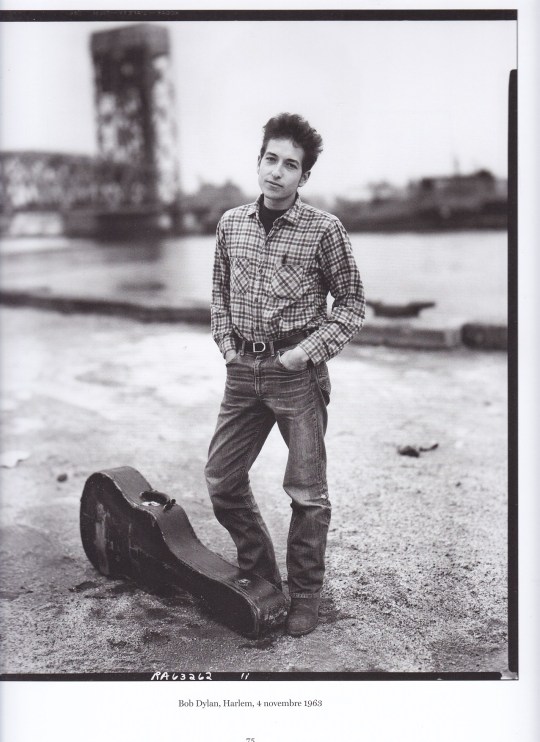
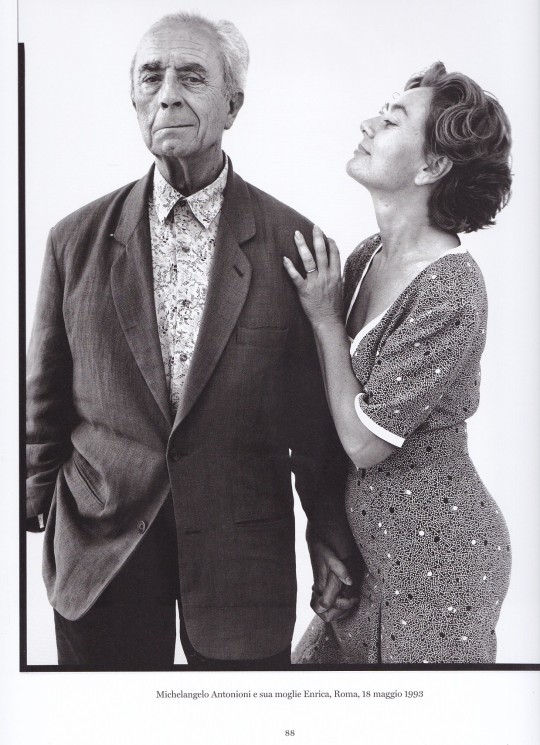


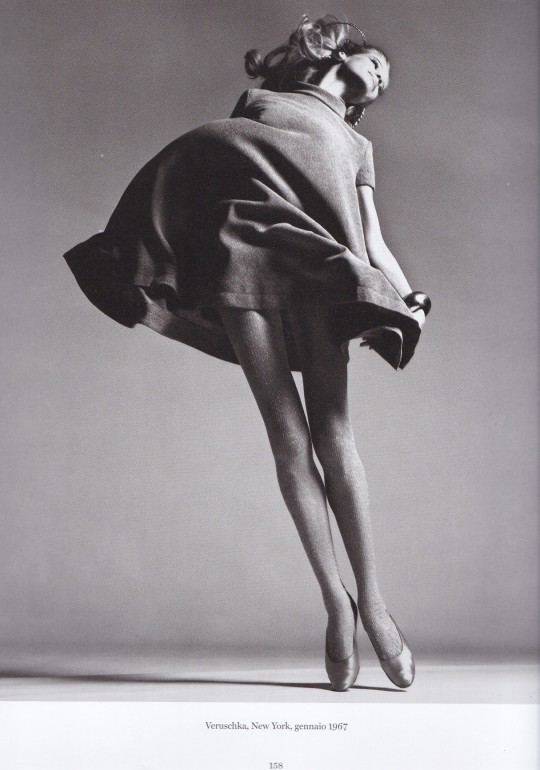
Richard Avedon Relastionships
a cura di Rebecca Senf
Skira, Milano 2022, 194 pagine, 25x 32.5 cm, ISBN 978-8857248608
euro 39,00
email if you want to buy :[email protected]
“Richard Avedon – Relationships” è la mostra dedicata al maestro di fotografia americano che ha rivoluzionato il mondo della moda. Palazzo Reale, Milano 22/09/22 – 29/01/23
Oltre sessant'anni di carriera di uno dei grandi maestri della fotografia del Novecento Un omaggio a Richard Avedon (1923-2004), il fotografo statunitense che ha legato il suo nome e i suoi scatti a riviste iconiche come Harper's Bazaar, Vogue e The New Yorker. Celebre ritrattista, Avedon fu tra i primi padri della fotografia di moda di cui rivoluzionò lo stile quando, già dal 1945, tralasciò le pose statiche per collocare le modelle in ambientazioni reali. Quelle di Avedon sono immagini quasi cinematografiche che portano chi le osserva a immaginare i racconti e le storie che sembrano evocare. Davanti all'obiettivo di Avedon non sono transitate solo le modelle più famose dell'epoca, ma anche una ricca compagine di personaggi tra i quali attori, danzatori, celebrità, artisti, musicisti, scrittori, attivisti per i diritti civili, fino ai capi di stato. Inoltre, non di rado il medesimo soggetto veniva ritratto più volte e in periodi diversi, creando vere e proprie relazioni fotografiche che rivelano aspetti differenti sia della persona ritratta, sia del suo rapporto con il fotografo. Realizzato in collaborazione con il Center for Creative Photography e la Richard Avedon Foundation (con main partner Versace e media partner Vogue Italia), Richard Avedon. Relationships presenta oltre cento fotografie di moda e ritratti iconici, appartenenti alla vasta collezione del Center for Creative Photography: dagli artisti Jasper Johns, Andy Warhol e Louise Nevelson a Ezra Pound e Truman Capote, da John Ford e Michelangelo Antonioni a Humphrey Bogart e Marilyn Monroe, da Jimmy Carter e George Bush a Malcom X e Kofi Annan, da Bob Dylan, John Lennon e Paul McCartney alle modelle Dovima, Veruschka e Linda Evangelista. Da questi straordinari ritratti emerge la capacità di Avedon di catturare espressioni del volto, gesti del corpo, momenti, cambiamenti, stili e tensioni che hanno attraversato la nostra società. Qualità messe ancora più in evidenza dai ritratti in bianconero che lo hanno reso celebre. Queste foto, dove sono riprese personalità che hanno segnato la storia del Novecento, modelle o persone comuni, regalano emozioni a ogni sguardo curioso sull'uomo.
27/10/22
orders to: [email protected]
ordini a: [email protected]
twitter: @fashionbooksmi
instagram: fashionbooksmilano, designbooksmilano tumblr: fashionbooksmilano, designbooksmilano
#Richard Avedon#Avedon#photography exhibition catalogue#Palazzo Reale Milano 2022#Center for Creative Photography#Andy Warhol#Veruschka#Bob Dylan#Jean Shrimpton#Marlene Dietrich#Michelangelo Antonioni#photography books#libri di fotografia#Rebecca Senf#fashionbooksmilano
66 notes
·
View notes
Text
Ciao! Era un po’ che pensavo di fare questo post. Con il rischio, se non la certezza, di risultare cringe io ci provo.
Sono tornato a Torino dall’inizio della pandemia e vorrei farmi nuovi amici e conoscenze. Mi piacerebbe conoscere persone che magari hanno passioni simili alle mie, persone nuove da conoscere e magari uscire a divertirsi ogni tanto.
Sono appassionato di fotografia e cinema, videomaking. Mi piacerebbe in futuro lavorarci, al momento sto ancora esplorando le mie capacità. Sono una persona un po’ introversa, soprattutto all’inizio, ma mi piacerebbe conoscere nuove persone. Le uniche cose che “richiedo” sono: Abitare a Torino (o comunque in Piemonte), essere lgbtqia+ friendly, avere dai 20 anni in su (io ho 25 anni, mi piacerebbe fare amicizia con miei coetanei).
(Se c’è risposta a questo post magari posso fare un gruppo Telegram con chi vuole aderire)
|
|
English:
HI! I've been thinking about making this post for a while. With the risk, if not the certainty, of being cringe, I'll try.
I have returned to live in Turin since the beginning of the pandemic and would like to make new friends and acquaintances. I would like to meet people who perhaps have similar passions to mine, new people to meet and maybe go out and have fun every now and then.
I am passionate about photography and cinema, videomaking. I would like to work with them in the future, at the moment I'm still exploring my skills. I'm a bit of an introvert, especially at the beginning, but I'd like to meet new people. The only things I "require" are: Living in Turin (or in any case in Piedmont), being LGBT+ friendly, being aged 20 or over (I'm 25, I'd like to make friends with my peers).
(If there is a response to this post maybe I can create a Telegram group with anyone who wants to join)


#torino#turin#northern italy#italy#italia#piemonte#lgbtqiia+#lgbtq community#lgbt italia#queer#transgender#friends#frienship#just speaking#telegram#original photographers#photography#cinema#video making#photographers on tumblr#artists on tumblr#findyourthing
7 notes
·
View notes
Photo
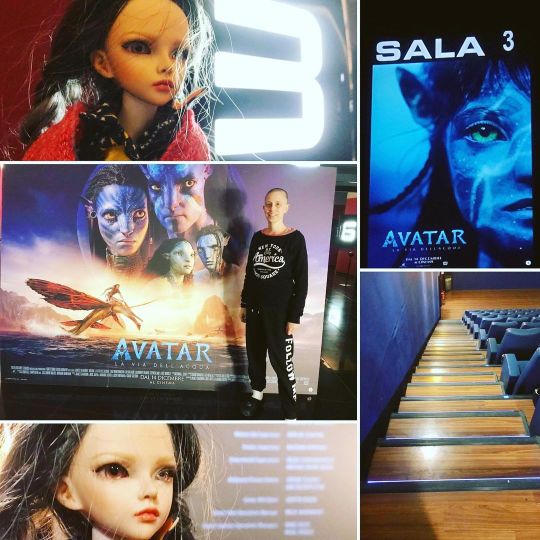
Che cosa significa andare sei volte al cinema a vedere lo stesso film? Follia o dedizione? C’è un sottile limite tra le due e non tutti riescono a capirlo. La necessità di farlo è propria solo di chi riesce ad apprezzare l’arte. Alcuni film basta guardarli una volta, altri una volta è anche troppo ma questo va visto almeno due volte. Parto dal presupposto che si è apprezzato il primo, dopo tantissimo tempo arrivare a vedere il secondo è sconvolgente. Lo stesso effetto che mi fece Star Wars episodio 7 nel 2015 al cinema. Al primo impatto si è talmente tanto travolti dalle emozioni che persino la trama in tutte le sue variopinte sfaccettature artistiche non si riesce a coglierla tutta nei minimi particolari. Spesso un film come un libro va rivissuto subito una seconda volta perché i lavori migliori sono i più complessi e per assimilarli al meglio vanno assaporati più volte. La cosiddetta prova del nove è data dalla multipla visione perché se qualcosa che ci è piaciuto molto una volta e rivisto ci piace ugualmente o anche di più significa che è valido (se non altro per noi). Per esempio recentemente ho visto la terza stagione di Stranger Things e mi era piaciuta talmente tanto che l’ho rivista subito. La seconda volta mi ha fatto lo stesso effetto e ingorda me la sono vista una terza volta. Alla terza visione però la serie ha cominciato a perdere colpi, sono venuti fuori difetti e noia, ho faticato ad arrivare alla fine. Invece con Avatar 2 dopo la sesta volta ho ancora la necessità di guardarlo, di impararne le battute. Non sono riuscita a trovare il minimo errore (non che mi aspettassi di trovarli), anche gli sguardi dei singoli personaggi impeccabili, non sempre è così. Per non parlare del fatto che il 3D è solo al cinema e questo film visto a casa perderà un po’ di magia anche se non tutta certamente. Durando tre ore sono stata 18 ore su Pandora e non mi basta mai. Per non parlare del fatto che alla quinta volta ho cominciato a sentire la necessità di tuffarmi in piscina per trovare io mio ilu. dal vostro inviato al Cinema Strop 🍿 sala 6️⃣ 🐰 #photos of ✨ #cinema 🍿 #recensione #film 🍿 #photography #avatar ☠️ #hermio 🍿 in #instagram (presso Falconara Marittima) https://www.instagram.com/p/CoNKoEeKvBD/?igshid=NGJjMDIxMWI=
2 notes
·
View notes
Text
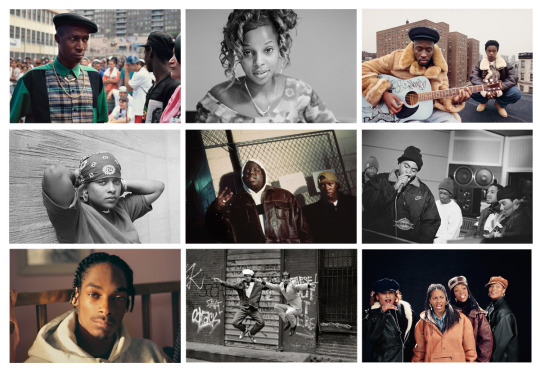
PHOTOGRAPHY | LISA LEONE: THE GOLDEN ERA OF HIP HOP
La fotografia ha sempre giocato un ruolo determinante all’interno della cultura musicale, andando a definire l’estetica degli artisti e dei generi. Qualcuno che si è trovato in mezzo a tutto questo, a partire dai primi anni ‘90 è stata la fotografa, originaria del Bronx, Lisa Leone. Da Nas che registra quello che sarebbe diventato il suo album di debutto “Ilmatic”, a Snoop Doog sul set del suo primo video, fino a Grandmaster Flash o Lauryn Hill e Wyclef Jean su un tetto di Harlem, le fotografie della Leone aprono le porte ai suoni, i luoghi e le persone che hanno forgiato e continuano ad influenzare l'hip hop. Una fotografia che rappresenta una cultura in transizione, una sorta di rappresentazione “pre-fama” dell’hip hop, prima che andasse incontro alla deriva mainstream e alla definitiva diffusione globale. Materiale splendido, soprattutto per chi le guarda oggi, consapevole del valore che quei momenti hanno rappresentato. Qualcosa di speciale traspare da ogni immagine - noi vi consigliamo di vederle tutte, visitando qua sotto il sito di Lisa Leone.
Photography has always played a large part in music culture, helping to define the aesthetic of artists and genres. Someone who’s been in the midst of this, since the early nineties is Bronx born photographer Lisa Leone. From Nas in the first studio recordings for what would become “Ilmatic”, to Snoop Doog on the set of his first video, to Grandmaster Flash or Lauryn Hill and Wyclef Jean on a Harlem rooftop, Leone’s photographs are open portals to the sounds, places and, most important, the people who forged and continue to influence the energy that is hip hop movement. Her photography represented a culture in transition, a sort of “pre-fame” photographs of hip-hop, before it drifted toward the mainstream and the global expansion. Amazing stuff, particularly for a viewer today, who is aware of the significance these moments were to hold. Something special shines through every images - we recommend you to see the entire gallery, by visiting Leone’s website here below.
thereallisaleone.com
#fuck the glory days#florence#reportage#photography#history#hip hop#rap#bronx#photographer#90s#black music#culture
0 notes
Text
Decadia
Ten years ago tonight I moved into this apartment.
My grandfather had just passed away the month before, a good friend was lost to me when he changed so radically we didn't recognise the man he'd become, and I had just broken up with the only man I'd loved to that day.
In the past decade I've been to England and Cuba, been spayed, seen U2 and Bowie, gone to Montreal, driven a racecar, studied Tai Chi, met some of the best people I'll ever know, stood with my feet on either side of the Prime Meridian, touched a standing stone, discovered a love of photography, fucked up, triumphed, loved, hated, made enemies and acquaintances, called someone halfway around the world just to sing Star Trek opera at them, finally figured out how to explain my spiritual beliefs to others, quit smoking, and finally gotten back on the road to finishing my education.
I am not the person I thought I'd be, nor the person I wish I was. But, despite this, I couldn't imagine - nor would I want to - being someone else. If I'd lived in another place with other people, I wouldn't have the things I have now. Perhaps I'd be better, perhaps not, but I wouldn't be me.
I don't make resolutions at this time of year, they never seem to pan out. One can make a fresh start any day of the year. Maybe I can promise myself to find an enjoyable vice to take the place of having quit smoking a couple of years back; and, hopefully, I'll finally find a job.
I remember sitting on the livingroom floor amongst half-emptied boxes and stacks left still to unpack, alone in my new home on the coldest night of the year, and turning on the television to hear an orchestra and choral group performing the Ode to Joy. I thought then that maybe it was a sign of some kind, or perhaps it was just a little piece of heaven after so many painful things. That piece of music still has the power to move me, to raise me out of almost any doldrum. This is the first portion:
O Freunde, nicht diese To"ne!
(Oh friends, not these tones!)
Sondern lasst uns angenehmer
(Let us raise our voices in more)
anstimmen, und freudenvoller!
(pleasing and more joyful sounds!)
0 notes
Text
Silvia Rosi

Silvia Rosi esplora lo spazio della memoria e della rappresentazione di sé, attraverso l’utilizzo di fotografia e video.
Nella sua pratica riflette sulla costruzione dell’identità con l’intento di creare una nuova realtà.
Partendo dall’archivio fotografico familiare e attingendo alle origini e all’eredità culturale, ripercorre la sua storia personale rappresentata attraverso autoritratti in cui interpreta i suoi genitori raccontando la loro esperienza di migrazione dal Togo all’Italia.
Il suo lavoro è stato pubblicato, tra gli altri, da Foam e British Journal of Photography e selezionato per diverse residenze in giro per il mondo.
Premiata con il Jerwood/Photoworks Awards e inclusa nel progetto del British Journal of Photography, Portrait of Britain, ha vinto il Premio Vic Odden della Royal Photographic Society ed è stata tra le persone finaliste del MAXXI Bulgari Prize.
Ha partecipato a numerose mostre in contesti internazionali tra cui spiccano la National Portrait Gallery, il Brooklyn Museum e il LACMA di Los Angeles.
Con l’autoritratto affronta, da una prospettiva personale, ciò che diventa un racconto collettivo, carico di messaggi che sfociano in un più ampio discorso politico.
Nata a Scandiano, Reggio Emilia, nel 1992, vive e lavora tra Lomé e Londra, città in cui si è laureata in fotografia al London College of Communication della University of the Arts nel 2016.
Sin dai primi lavori è emersa la centralità della sua storia di italiana afro-discendente.
In Election Box, realizzato nei primi anni della sua formazione, l’esperienza di scrutatrice di seggio durante le elezioni è diventata uno spunto giocoso di riflessione sulla ‘sparizione’ delle persone nella cabina elettorale, ma anche sulla sua presenza in un luogo interdetto a chi non ha la cittadinanza italiana.
In Encounter è sempre il suo corpo al centro di un’indagine fotografica che attinge da motivazioni storiche e antropologiche: partendo dall’evoluzione della fotografia vittoriana, e in particolare dalla tradizione del ritratto in studio dell’Africa occidentale, ha ragionato sui processi di auto-rappresentazione che attribuiscono agli oggetti di scena un ruolo fondamentale nel costruire l’immagine e la storia della persona ritratta. Ha incluso elementi che rimandano a episodi di vita reali, come la presenza dei pomodori nel ritratto paterno che allude allo sfruttamento nei campi delle persone migranti in Italia, di cui egli stesso ha fatto esperienza.
I membri della sua famiglia, padre e madre, sono impersonati dall’artista stessa, che si cala in un ipotetico album di famiglia per raccontare il proprio vissuto attraverso quello dei suoi genitori.
La necessità di focalizzarsi sulle dinamiche della famiglia, attingendo al proprio passato ma anche attraverso altri tipi di archivi che è andata a ricercare in Togo, è inserita in una più ampia riflessione sui processi di immigrazione, sui retaggi coloniali e sulla perdita di alcune tradizioni nel passaggio tra contesti diversi.
L’esercizio della memoria è la sua pratica per riagganciare radici perdute e lavorare sulle conseguenze della diaspora africana.
In Protektorat riporta alla luce documenti del periodo coloniale tedesco in Togo, evidenziando la lotta per l’egemonia della lingua tra colonizzatori nelle colonie africane.
Per il Festival di Fotografia Europea, nel 2024, ha presentato la sua prima mostra personale italiana, dal titolo Disintegrata. Per questo lavoro ha raccolto centinaia di fotografie ordinarie, scatti di album di famiglia che raccontano la quotidianità di persone giunte dall’Africa prima del Duemila, in contesti diversi.
Per questo progetto, in una prolifica operazione di community building, Silvia Rosi ha attivato una rete italiana di persone afro-discendenti per formare un archivio familiare delle diaspore.
Le foto svolgono complesse funzioni sociali e diventano strumenti per affermare o indagare identità personale, appartenenza familiare, identificazione di genere, status di classe, affinità nazionale o appartenenza a una comunità.
La sua pratica artistica si muove nella relazione tra dimensione privata e pubblica della fotografia, tra immagine trovata e quella realizzata in studio, giocando sugli slittamenti di lettura e di significato generati dai diversi contesti di fruizione.
In un percorso che si snoda dall’album di famiglia al paesaggio abitato da corpi neri, esplora, restituisce e mette in scena, con umorismo, la nuova italianità fatta di differenze e sfumature, tutte importanti e degne di nota.
0 notes
Text

Con cosa l'han fatta, questa fotografia qua?
Hasselblad X Pan?
Widelux 1500?
Horizon 202?
Vanno chieste agli eccellenti Marco Cavina Massimiliano Terzi, queste cose qui.
O magari no, hanno solo ritagliato.
Sapete, negli anni sessanta non avevano le attuali ubbie sulla risoluzione, che amavano appellare definizione.
Salvo ora tornare indietro, il riferimento è alle riviste su carta riciclata.
Eccomunque respira, questa doppia pagina qua.
Respira il vento della Versilia, dolcemente modulato dalle cespugliate chiome.
Molti di noi hanno esperienza del luogo, sin da quegli anni lì.
Di come la pineta ci sembrava grande perché eravamo piccoli noi.
Di come si è ristretta davvero, poi.
Di come non s'è ristretta del tutto, per nostra fortuna.
Queste robe qui - le orizzontali panoramiche - si fanno col telefonino, oggi.
Orrificamente, sovente.
Tecniche cangiano - ma le vecchie perdurano, per chi fa sul serio con passione - l'emozione perdura.
Sapete, l'eccellente filosofo Antonio Giovanni Maria Zetti mi ha detto, citando Heidegger:
"la tecnica è una sorta d'incarnazione della metafisica".
Senza tecnica non si può portare a casa il ricordo, valeva già pei pittori.
Premuto il pulsante od intinto il pennello, il viaggio continua.
Il viaggio dalla fisica alla metafisica.
Quello che colora di sublime il sensibile.
All rights reserved
Claudio Trezzani
0 notes
Text
MIRA ASRININGTYAS & DITO YUWONO

Lundi 29 janvier 2024 à 19h (heure de Paris)
Monday January 29th 2024, 7pm (Paris time)
@ MSH, 16 – 18 RUE SUGER, 75006 (métro Odéon ou St – Michel)
Mira Asriningtyas est curatrice et autrice, Dito Yuwono artiste et curateur. Ensemble ils forment depuis 2011 le collectif curatorial LIR, basé à Yogyakarta—un collectif en perpétuel remaniement au fil de sa réflexion sur la responsabilité curatoriale et dont l’activité se déploie dans toute l’Asie du Sud-Est, aux USA et en Europe. “Curated by LIR”, une suite d’expositions, proposées à Yogyakarta, Jakarta, Kaliurang, New York et Tapei entre 2018 et 2023, retrace ce parcours curatorial que jalonnent "Crossing Ecotones - Mountains Seen; No Mountain Being", "Rhinolophus Sinicus", "Worship to Power » ou "Dream Express: Personalized History of Mysticism"
“Of Hunters and Gatherers“, un projet au long cours associe, à l'occasion d’une exposition, de colloques et d’un site web dédié, plusieurs institutions artistiques du sud-est asiatique situées à Chiang Mai (Thailande), Bandung (Indonésie), Ho Chi Minh City (Vietnam). Le projet s’est constitué à partir d’une marche du collectif avec deux artistes invité·e·s au pied du mont Merapi, et sur les routes qui longent le bas Mekong, à la frontière de la Thailande et du Laos.
Mais chacun·e a développé une pratique personnelle. Mira, qui a terminé en 2017 (au De Appel Art Center à Amsterdam) un projet de recherche sur les modalités décoloniales et polycentriques des apprentissages et de la connaissance, a été la commissaire de nombreuses expositions et de plusieurs programmes de séminaires et colloques au De Appel Art Center (Amsterdam); Stedelijk Museum (Amsterdam); Fondazione Sandretto Re Rebaudengo (Turin); KKF (Yogyakarta); ISCP (New York); MAIIAM Contemporary Art Museum (Chiang Mai); Our Museum (Taipei) entre autres. Elle a publié de nombreux articles et essais dans des revues, catalogues, magazines internationaux comme PARSE Journal ou comme Stedelijk Studies. En 2017 Mira a lancé le projet “900mdpl“ à Kaliurang, un village situé au pied du Mont Merapi qui aborde dans toute leur complexité les enjeux post-coloniaux, environnementaux, politiques et mémoriels que la fragilité sismique de la région et les éruptions de ce volcan très actif viennent dévoiler sur un mode spectaculaire et dans l’urgence. Dito travaille les mêmes thèmes dans son œuvre d’artiste qui donne une attention prioritaire à la mémoire collective, à l’inscription des vies singulières dans l’histoire, à l’urgence environnementale —une attention toujours ancrée dans des pratiques site -specific. Il a été l’invité de The Northern Centre for Contemporary Art (NCCA) Darwin (Australie), Ruangrupa (Jakarta); Jatiwangi Art Factory (Indonesie); GOLEB & Het Wilde Weten (Pays-Bas); TIFA Working Studios (Inde); et Collectif BONUS (Nantes). Son travail a été exposé dans de nombreux centres d’art aux États-Unis (Herbert F. Johnson Museum of Art), en Europe (Festival de la Photo, Arles, 2017), en Indonésie… Il est depuis 2020 le co-directeur de Ruang MES56 et a été le commissaire du premier Festival International de Photographie à Jogja en 2023, “Mengukur Panjang dan Lebar Sebuah Bingkai” (A Strategy to Measure a Frame).
En 2024 Mira et Dito ont été nommé·e·s directeu·rice·s du CEMETI- Institut for Art and Society.
[EN]
Mira Asriningtyas is a curator and author, Dito Yuwono an artist and curator. Together they have formed the Yogyakarta-based curatorial collective LIR since 2011, a collective that is constantly reshaping itself as they reflect on curatorial responsibility, and whose activity extends throughout Southeast Asia, the USA and Europe. "Curated by LIR", a series of exhibitions proposed in Yogyakarta, Jakarta, Kaliurang, New York and Tapei between 2018 and 2023, retraces this curatorial journey that includes "Crossing Ecotones - Mountains Seen; No Mountain Being", "Rhinolophus Sinicus", "Worship to Power" and "Dream Express: Personalized History of Mysticism".
"Of Hunters and Gatherers" is a long-term project that brings together several Southeast Asian art institutions in Chiang Mai (Thailand), Bandung (Indonesia) and Ho Chi Minh City (Vietnam) for an exhibition, colloquia and a dedicated website. The project grew out of a walk by the collective and two guest artists at the foot of Mount Merapi, and on the roads along the lower Mekong, on the border between Thailand and Laos.
But each has developed a personal practice. Mira, who completed a research project on decolonial and polycentric modalities of learning and knowledge at the De Appel Art Center in Amsterdam in 2017, has curated numerous exhibitions and several seminar and symposium programs at the De Appel Art Center (Amsterdam); Stedelijk Museum (Amsterdam); Fondazione Sandretto Re Rebaudengo (Turin); KKF (Yogyakarta); ISCP (New York); MAIIAM Contemporary Art Museum (Chiang Mai); Our Museum (Taipei) among others. She has published numerous articles and essays in international journals, catalogs and magazines such as PARSE Journal and Stedelijk Studies. In 2017 Mira launched the "900mdpl" project in Kaliurang, a village at the foot of Mount Merapi, which addresses in all their complexity the post-colonial, environmental, political and memorial issues that the region's seismic fragility and the eruptions of this highly active volcano come to reveal in a spectacular mode and in a hurry. Dito works on the same themes in his work as an artist who gives priority attention to collective memory, the inscription of singular lives in history, and environmental urgency, always anchored in site-specific practices. He has been invited by The Northern Centre for Contemporary Art (NCCA) Darwin (Australia), Ruangrupa (Jakarta); Jatiwangi Art Factory (Indonesia); GOLEB & Het Wilde Weten (Netherlands); TIFA Working Studios (India); and Collectif BONUS (Nantes). His work has been exhibited in numerous art centers in the United States (Herbert F. Johnson Museum of Art) in Europe (Festival de la Photo, Arles, 2017), in Indonesia... Since 2020 he has been the co-director of Ruang MES56 and curated the first International Photography Festival in Jogja in 2023, "Mengukur Panjang dan Lebar Sebuah Bingkai" (A Strategy to Measure a Frame).
In 2024 Mira and Dito were appointed directors of CEMETI- Institut for Art and Society.
Programmation et prochains rendez-vous sur ce site ou par abonnement à la newsletter : [email protected]
Pour regarder les séminaires antérieurs : http://www.vimeo.com/sysk/
Séminaire conçu et organisé par Patricia Falguières, Elisabeth Lebovici et Natasa Petresin-Bachelez et soutenu par la Fundación Almine y Bernard Ruiz-Picasso para el Arte
0 notes
Text
Books of 2023

Book 21 of 2003
Title: Low and Slow: Fly and Fight Laos
Authors: William Platt
ISBN: 9780692600863
Tags: LAO Khang Khay - Chinese Cultural Center, LAO Khang Kho, LAO Khmu, LAO Lao Loum, LAO Lao Theung, LAO Laos, LAO Laotian Civil War (1959-1975), LAO Lima Site 02 - San Tiau (Laotian Civil War), LAO Lima Site 03 - Nong Het (LCW), LAO Lima Site 103 - Phu Da Pho (LCW), LAO Lima Site 108 - Moung Soui (Laotian Civil War), LAO Lima Site 113 - Moung Cha (LCW), LAO Lima Site 15 - Ba Na (LCW), LAO Lima Site 184 - Houei Tong Kho (Laotian Civil War), LAO Lima Site 20 - Sam Thong (Laotian Civil War), LAO Lima Site 20A - Long Tieng (Laotian Civil War), LAO Lima Site 22 - Xieng Kouang / Lima Lima (Laotian Civil War), LAO Lima Site 249 - Ban Ne Then (LCW), LAO Lima Site 32 - Boung Lam (Laotian Civil War), LAO Lima Site 36 - Na Khang (Laotian Civil War), LAO Lima Site 54 - Luang Prabang (Laotian Civil War), LAO Lima Site 72 - Tha Tam Bleung (LCW), LAO Moung Soui, LAO MR Military Region (Laotian Civil War), LAO MR2 (Laotian Civil War), LAO MR3 (Laotian Civil War), LAO MR4 (Laotian Civil War), LAO Muang Koun, LAO Nan Ngum River, LAO Nong Pet, LAO Operation About Face / Kou Kiet (1969) (Laotian Civil War), LAO Pathet Lao, LAO Phou Bia, LAO Phou Khe, LAO Phou Nok Kok (Black Lion), LAO Plain of Jars / Plaine des Jarres, LAO Prime Minister Souvanna Phouma, LAO RLA General Vang Pao, LAO RLA Royal Laotian Army, LAO RLA RT Hotplate (Laotian Civil War), LAO RLA SGU Special Guerrilla Units, LAO RLAF CPK Chao Pha Khao Hmong Pilots/Backseaters (Laotian Civil War), LAO RLAF Royal Lao Air Force, LAO Route 4, LAO Route 6, LAO Route 7, LAO Route 71, LAO Route 74, LAO Sala Phou Khoun, LAO Salavan Province, LAO Sam Nuea, LAO Sam Thong, LAO Savannaket Province, LAO Sung Meo, LAO USAF Butterfly FAC (Laotian Civil War), LAO USAF Project 404 (Laotian Civil War), LAO USAF Steve Canyon Program - Ravens FAC (Laotian Civil War), LAO Vientiane, LAO Vientianne - US Air Attache (Laotian Civil War), LAO Xieng Khouang, LAO Xieng Khoung, Nungs, O-1 Bird Dog, Son Tay (Vietnam), Son Tay Raid, T-28 Trojan, THA PARU Border Patrol Police Aerial Resupply Unit, THA RTA Royal Thai Army, THA RTAF Royal Thai Air Force, THA RTAFB Udorn Royal Thai Air Base, THA Thailand, US Ambassador George Godley, US CIA Bill Lair, US CIA Central Intelligence Agency, US COA CASI Continental Air Services International, US COA Continental Airlines, US Secretary of State Henry Kissinger, US USA Green Berets, US USA United States Army, US USA USSF Special Forces, US USA USSF Team A-236, US USA USSF Team A-239, US USAF 1st Special Operations Sqd - Hobo, US USAF 21st TASS - Mike FAC, US USAF 602nd Special Operations Sqd - Firefly, US USAF 7th ABCCC Airborne Command and Control Sqd - Cricket, US USAF 7th ABCCC Airborne Command and Control Sqd - Moonbeam, US USAF 7th/13th Air Force, US USAF United States Air Force, US USIS United States Information Service, USA 5th SFG, USAID, VNM Bu Prang, VNM Bu Prang Special Forces Camp (Vietnam War), VNM CIA Air America (1950-1976) (Vietnam War), VNM DRV NVA 144th Regiment, VNM DRV NVA 312th Division, VNM DRV NVA General Vo Nguyen Giap, VNM DRV NVA North Vietnamese Army, VNM Duc Lap, VNM Duc Lap Special Forces Camp (Vietnam War), VNM FSB Annie (Vietnam War), VNM FSB Helen (Vietnam War), VNM FSB Kate (Vietnam War), VNM FSB Martha (Vietnam War), VNM FSB Susan (Vietnam War), VNM Ho Chi Minh Trail (Vietnam War), VNM II Corps (Vietnam War), VNM RVN ARVN 23rd ID, VNM RVN ARVN Army of the Republic of Vietnam, VNM US USSF Mobile Strike Force (MIKE) (Vietnam War), VNM Vietnam, VNM Vietnam War (1955-1975)
Rating: ★★ (2 stars)
Subject: Books.Military.20th-21st Century.Asia.Vietnam War.Laotian Civil War.Aviation.FAC.Ravens
Description: Non-fiction, Faith, Secret War, Laos 1970, combat photography, personal account, LS 20A, Raven Forward Air Controller, O-1 Bird dog, AT-28D, and U17B pilot. General Vang Pao, Hmong freedom fighters, CIA employees. Volunteers. We were birds of prey; finding and destroying targets of opportunity and defending allied outposts. We dueled with dragons every day. In a flash of time, at the speed of haste, we pressed forward in the straps to the next battle, knowing many of us would die very young. Living in the present, and sculpting the future as best we could; we did our best to free the oppressed. Allied pilots flew with conspicuous bravery that others could live in Freedom's dignity, and love in her blessings of peace. Worthy dreams are too often victims of reality, like wilderness and paradise, light and dark, and long life. Ravens shared leaded air and warrior stories. "It feels so good when gunners miss.
This work is an expression of my experiences as a Raven Forward Air Controller during the secret war in Laos. My window of participation was from December 1969 thru June 1970. This work is about people I knew who risk their life in a fight for the freedom of others and whose lives were twisted and tempered in the crucible of Regional Civil Wars. This is a story of promise, betrayal, and hardship that progressed to a refugee gateway leading to compassion, freedom, education, and prosperity. The Hmong, Lao, Cambodian, Montagnard, and Vietnamese refugees from the Vietnam Area produced vibrant communities in the United States. The Hmong preserved and learned to adapt to the American system without losing their cultural identity as Hmong or Americans. The Hmong have cleared the path and set the example for new refugees to follow. I hope this work is helpful to many in understanding the Raven's mission during the Secret War in Laos. This work should be encouraging for war refugees new to America. The United States military veterans should find goodwill in stories of survival and courage against great odds. "Freedom is not Free."
Review: This book could have been good... it could have even been a 3 star if it had an editor and a narrative arc. It needed both so badly. Instead it repeated itself almost every chapter, it had acronyms it never explained and are not common ones used in other books about the same topic, and it really didn’t have much to say beyond a cursory look at the Laotian Civil War and his love-letter to the Laotian Hmong. The guy was there, he saw stuff, he did stuff, with a good ghost writer, he could write at least two brilliant books about his time as a Mike FAC and a Raven FAC... this book wasn’t it.
0 notes
Photo
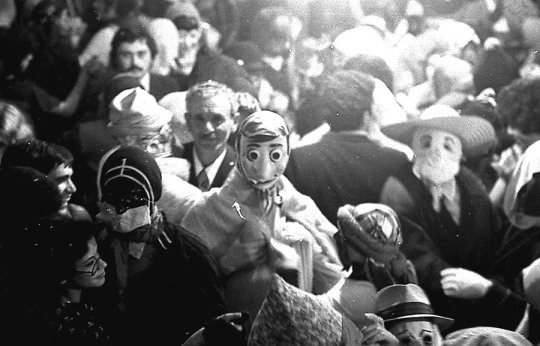
Pantelleria, Carnevale a Khamma, Klaus-Peter Fischer, 1976 "A Pantelleria il carnevale ha una lunga tradizione pagana contadina. Inizia l’8 dicembre, finisce durante il periodo delle Ceneri e si svolge all’interno dei Circoli. I Circoli hanno una loro bandiera, uno statuto, un codice d'onore tramandato dagli antenati che, dalla seconda metà dell’800, li costruirono come luogo per il dopolavoro agricolo. Durante il Carnevale questi luoghi si trasformano in piccole e affollate balere dove è possibile ballare il liscio fino all’alba e dove si può celare la propria identità sotto la maschera. Più che mascheramento è un camuffamento sotto cui ci si nasconde con lenzuola, guanti da cucina, parrucche colorate e quant’altro possa servire a confondere o nascondere. Alcuni nascondono addirittura la propria voce declinandola in falsetto. A mezzanotte il maestro d’orchestra annuncia a tutte le maschere presenti che, se vogliono rimanere nel Circolo, devono privarsi del travestimento. Chi non ha intenzione di svelare la propria identità è quindi costretto, ad uscire dalla sala da ballo. Da due secoli, questa tradizione pagana non è mai cambiata e, come si può comprendere, questi balli, specialmente nel passato e per le donne, costituivano l’unica opportunità di evasione e di nuove conoscenze." Spiegazione tratta dal libro Isole d'inverno di @federicadigiovanni_photo #pantelleria #pantelleriaisland #KlausPeterFischer #carnevale #khamma #isoleminori #isoleitaliane #mare #isole #island #sea #isola #mediterraneo #photography #blackandwhite #bn #vintagephoto #vintagephotography #oldphoto #foundphoto #lostmemories #antiquephoto #oldphotos #oldphotograph #isoleminorifoto (presso Isola di Pantelleria) https://www.instagram.com/p/CouIdLdM43o/?igshid=NGJjMDIxMWI=
#pantelleria#pantelleriaisland#klauspeterfischer#carnevale#khamma#isoleminori#isoleitaliane#mare#isole#island#sea#isola#mediterraneo#photography#blackandwhite#bn#vintagephoto#vintagephotography#oldphoto#foundphoto#lostmemories#antiquephoto#oldphotos#oldphotograph#isoleminorifoto
1 note
·
View note
Text
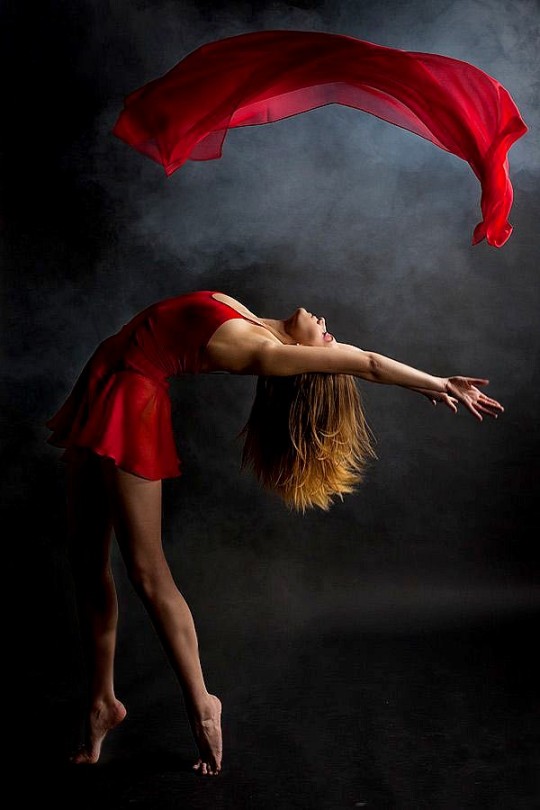
Tutto ciò che avevo sempre pensato di me,
chi fossi, cosa fossi, era solo una menzogna.
O quasi.
Non hai idea
di quale stupefacente liberazione!
- Neil Gaiman, da "Stardust"
Ionel Onofrash Photography - Red summer
31 notes
·
View notes
Text
Joachim Schmeisser – Side Effects
di Marc Peschke da https://www.immagis.de/ (trad. e rev. G.M.)
– Side Effects L’essenza della fotografia –
C'è magia nella fotografia? La fotografia stessa è magica? Ci interroghiamo su queste domande mentre consideriamo la nuova serie "Effetti collaterali - L'essenza della fotografia" di Joachim Schmeisser.
Tale serie è uno dei pochi esempi veramente sorprendenti, accattivanti e innovativi di fotografia contemporanea, anche perché presenta il suo tema come principi fondamentali del mezzo stesso.
Joachim Schmeisser si è fatto conoscere per le sue iconiche immagini di animali, in particolare per i ritratti di elefanti. La sua serie attuale, "Side Effects" (Effetti collaterali), giustappone la maestosa bellezza degli animali in via d'estinzione con un'estetica fortemente contrastante, ovvero la bellezza del materiale fotografico analogico non elaborato.
Il materiale di base è costituito da spezzoni di film esposti, prodotti tra il 1975 e il 2006, che l'artista ha raccolto nel corso degli anni. “Ogni emulsione di pellicola ha una struttura unica”, dice l'artista. Pellicole come Ektachrome 64, Ektachrome 100, Kodachrome, Fuji Velvia, Fuji Provia, Polaroid Polachrome o Polaroid Polapan si differenziano chiaramente nelle loro numerose varianti distintive.
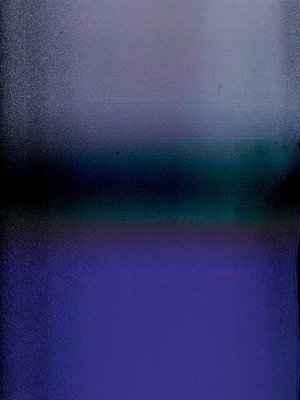
© Joachim Schmeisser, No. 80 Polaroid PolaChrome Color
All'inizio del processo artistico, i singoli spezzoni vengono scansionati con un ingrandimento estremo. In un complesso processo digitale, che non altera la qualità originaria, l'artista sviluppa un'opera d'arte ibrida analogico-digitale che ci riporta all'essenza del fotografico. Perché "Side Effects" è un omaggio all'emulsione fotografica, alla soluzione fotosensibile di cui è rivestita la pellicola. C'è qualcosa di insito in questo inizio del processo fotografico che è stato più volte associato al concetto di “magico”.
Susan Sontag, William Henry Fox Talbot e soprattutto Walter Benjamin hanno sottolineato nei loro scritti ciò che Benjamin attribuisce al “valore magico” della fotografia. Chi ha sperimentato la camera oscura conosce lo stupore del processo fotografico analogico. All’inizio della sua carriera Joachim Schmeisser ha scoperto quella che ora chiama una "traccia magica". Questo può accadere quando l'otturatore usa diverse esposizioni per portare un film alla posizione di ripresa, e spiega: “Sono esposizioni accidentali inosservate che, a volte, catturano la perfetta transizione verso l'emulsione della pellicola sensibile alla luce. Per lo più sovra o sottoesposte, mostrano aree color pastello o cremisi che crescono dalla superficie della pellicola ancora nera non rivestita a e, con alcune pellicole e sviluppi, portano anche a bizzarre forme espressioniste, alcune delle quali ricordano strutture cosmiche o microcosmiche”.
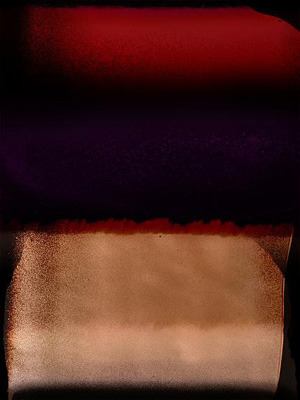
© Joachim Schmeisser, No. 68 Kodak Ektachrome 64
Questi "effetti collaterali" accidentali e non intenzionali sono ciò che di solito viene tagliato e scartato. Schmeisser utilizza questo materiale dal 2022 per creare opere d'arte, che - sebbene sottoposte a un processo digitale – sono anche un ritorno alla prima era della fotografia, quando il mezzo era descritto come “magico lavoro manuale”.
Walter Benjamin ha fatto riferimento nel suo saggio "A Short History of Photography" (1931) al "valore magico" della fotografia. Cioè, intendeva piuttosto un incidente unico quando affermava: “È una natura diversa quella che parla alla macchina fotografica rispetto a quella che parla all’occhio: così diversa che al posto di uno spazio consapevolmente costruito da un uomo al suo posto subentra uno spazio costruito inconsciamente. Lo stesso può anche dirsi degli “Side Effects”, il cui carattere accidentale porta, per mano dell'artista, alla realizzazione di immagini il cui effetto è alquanto travolgente.
Queste immagini vengono oggi alla ribalta dall'eredità delle pellicole, molte delle quali sono vintage e ora non più prodotte. Sono immagini visive molto diverse e astratte, che ricordano anche la rilevanza storico-artistica della pittura. Ad esempio, la pittura a colori di artisti americani come Mark Rothko che ha prodotto più o meno lo stesso stile negli anni '50.

© Joachim Schmeisser, No. 84 Kodak Ektachrome
Tenendo presente l'esempio di Rothko: l'effetto visivo della struttura superficiale spesso pesantemente rimaneggiata dei suoi dipinti riflette lo spettro degli stati emotivi umani. Questo risuona anche con i “Side Effects”: a volte luminosi, poi cupi; a volte armoniosi, poi pieni di tensioni. A volte impulsivi, poi introspettivi e meditativi; a volte caldi, poi freddi; sono uno specchio di questi sentimenti. Uno specchio che non fa a meno della sua controparte. Come ha affermato una volta lo stesso Rothko: “Un’immagine vive di compagnia, espandendosi e accelerando agli occhi dell'osservatore sensibile. Muore per lo stesso segno”.
Barnett Newman è un altro esempio rappresentativo della pittura a colori americana. Newman divenne famoso negli anni '50 per i suoi quadri dalle caratteristiche bande colorate, per i suoi campi monocromi di colore e fasce verticali, che chiamava “zip”. Newman ha dipinto "Chi ha paura del rosso, del giallo e del blu?" tra il 1966 e il 1970, un ciclo di dipinti divenuto icona dell'arte del Novecento.
Newman ha usato ripetutamente il termine "sublime" per descrivere la sua opera d'arte e l'ha definita "metafisica esperienza del sublime”. Nel suo saggio "The Sublime Is Now" (1948), spiega come il colore nelle sue opere sia il più importante mezzo di espressione. Le astrazioni pittoriche di Newman sono cariche di profondo significato intellettuale – che li collega con gli “Side Effects”. Newman trattava l'astrazione come veicolo per riflettere idee, miti ed emozioni.
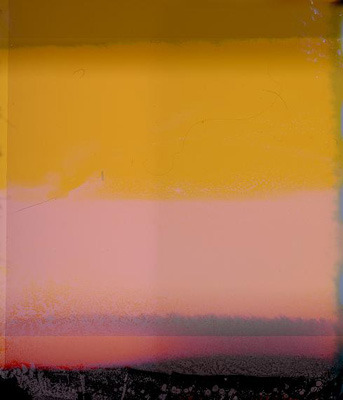
© Joachim Schmeisser, No. 21 Fuji Velvia
La serie “Side Effects”, infatti, richiede osservatori sensibili. Le immagini testimoniano un espressionismo fotografico astratto del tutto inedito, del tutto stupefacente. La lunga tradizione dell’arte astratta qui si prolunga scrivendo un altro capitolo, con una serie che si distingue da sola nell'arte fotografica contemporanea e trae la sua eloquenza da una seducente miscela di bellezza e magia. L'artista torna con questa serie all'essenza della fotografia come astrazione della realtà.
C'è qualcosa di ineffabile in questo. È qualcosa che non è completamente accessibile al pensiero razionale.
Allo stesso tempo, queste immagini sono anche la prova della "Fotografia concreta" nel senso del fotografo e teorico della fotografia, Gottfried Jäger, perché non sono "astrazioni di qualcosa, ma concretizzano qualcosa, qualcosa di nuovo".
Possiamo scoprire così tanto e sempre qualcosa di nuovo nelle immagini vivide e meravigliose della serie: sono diverse da ciò che di solito altrimenti vediamo. Provengono da un mondo del tutto originale, dal mondo interiore della macchina fotografica e ci ricordano anche che una fotografia non deve necessariamente rappresentare qualcosa. Per dirla di nuovo con i termini di Jäger: queste tracce di luce indicano qualcosa che prima era nascosto: ”La fotografia diventa propria solo rinunciando agli elementi riprodotti e raffigurati e può tornare al suo fondamento innato, a una sintassi che altrimenti rimarrebbe nascosta”. Per quanto la mano dell'artista sia stata all'opera anche qui nella creazione di queste fotografie, esse raccontano di una libertà illimitata che sembra prevalere nella camera oscura della macchina fotografica. Esplorano i principi di base del processo fotografico, eppure la loro grande bellezza grande bellezza indica come l’elemento fisico si trasferisce in una dimensione spirituale. C'è magia nella fotografia? Possiamo riflettere su questa domanda mentre facciamo le nostre osservazioni.
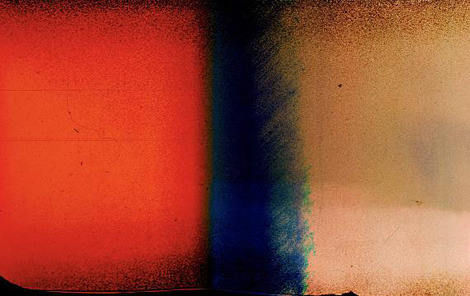
© Joachim Schmeisser, No. 66 Agfachrome
Infine, possiamo anche riflettere su quale connessione leghi queste immagini a noi come osservatori. Potremmo interpretarle come uno specchio dei nostri stati emotivi. Sembrano stranamente essere molto vicine alle esperienze umane, vicine alla nostra paura, alla gioia, alla vita e alla morte.
Marc Peschke, Storico dell'arte e curatore
0 notes
Photo

Finalmente qualcosa di diverso, audace folle e per tutti questi motivi accattivante. Una storia che è al limite tra l’esclamare wow o nooo e che alla fine con abile maestria rimane sul wow e ti permette di assaporare un menu di scene proposte una dopo l’altra con un crescendo di ritmo tensione e originalità. L’idea di base del prestigioso ristorante nell’isola è ottima e ci si è saputo anche costruirci intorno una storia. Ovviamente la buona riuscita del film è dovuta anche allo chef, Ralph Fiennes recita nella parte come se fosse stato nella realtà uno chef da tutta la vita, ineccepibile. Anche la protagonista femminile è potente. Nonostante abbia sempre ritenuto Anya Taylor-Joy troppo poco espressiva qui riesce a trovare la sua parte a rimanere nel suo stile ma adeguandolo alla storia. Si tratta di alta cucina, un ambiente che ho sempre detestato e preso in giro e credo che questo film riesca a presentarcelo in un modo astuto tanto da renderlo interessante ma al tempo stesso patetico e quindi degno dello scintillante finale. Restare fuori dalle righe non è da tutti ormai, si rischia sempre di essere accantonati ma solo chi lo fa con arte riesce ad essere accettato persino da chi ama l’alta cucina. Il film è molto teatrale con un cast essenziale e una location fissa, elementi questi che non sempre possono essere utilizzati in modo efficace. La storia ha senso non è frenetica segue i suoi tempi e solo con un ritmo che non è concitato fin dall’inizio si può assaporare il crescendo che enfatizza il menù proposto dallo chef. Il finale (no spoiler) è anch’esso ottimo, anzi prelibato, senza scene inutili e lo stesso dicasi per l’inizio, concentrato, essenziale come i piatti degli chef, e per questo ricercato e dal sapore più decisivo. PS Avrei voluto guatarmi questo film al cinema ma ho potuto assaporare solo il poster cartonato che rimane ancora come mistico segno di un film che è stato proiettato sono un paio di settimane a tarda notte, i blockbuster sono solo quelli che vogliono loro. 📺 The Menu dal vostro inviato al Cinema Strop 🍿 sala home 🏡 🐰 #photos of ✨ #cinema 🧸 #movie 🍿 #recensione #photography ☠️ #hermio 🍿 in #instagram (presso Falconara Marittima) https://www.instagram.com/p/Cn1zxK4qTlE/?igshid=NGJjMDIxMWI=
1 note
·
View note